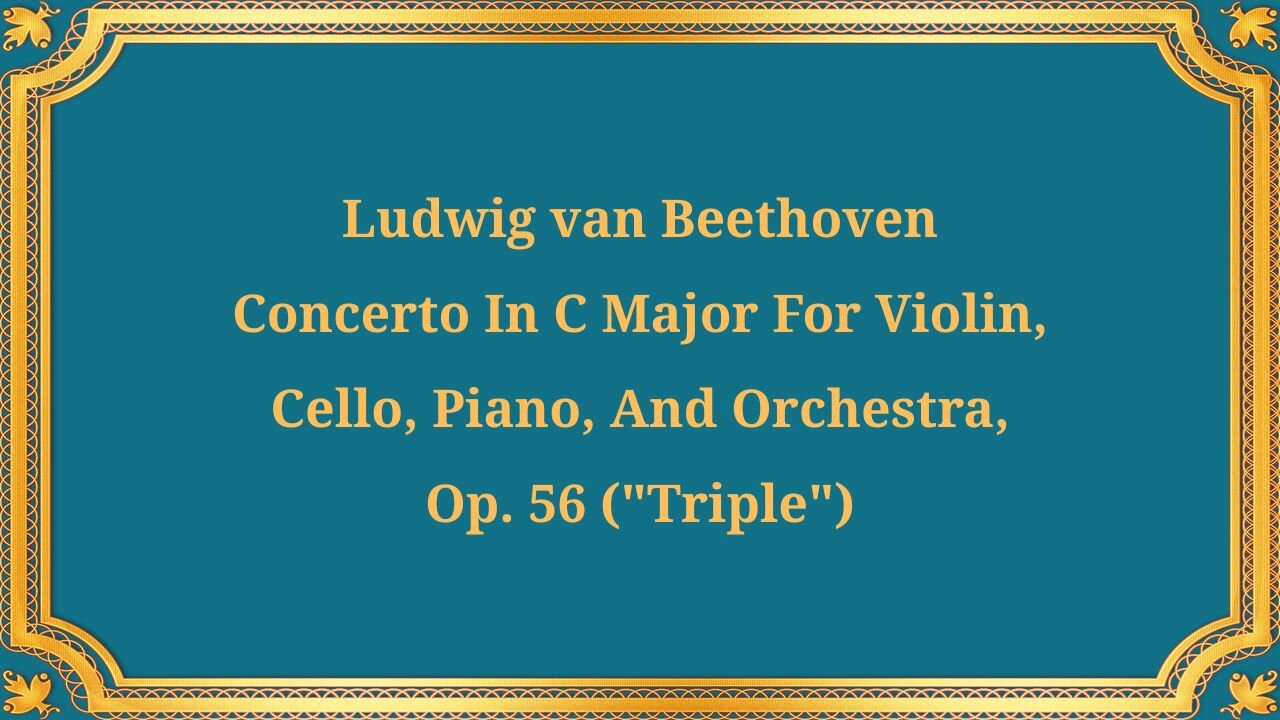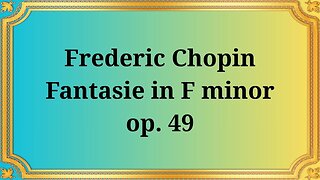Premium Only Content

Ludwig van Beethoven's Concerto in C major for Violin, Cello, Piano, and Orchestra, Op. 56
#Beethoven #TripleConcerto #ClassicalMusic #Concerto #Ensemble #RareRepertoire #RareEdition
Publication date 1949
John Corigliano; Leonard Rose; Walter Handl; Bruno Walter; New York Philharmonic
Among Ludwig van Beethoven's large-scale symphonies and solo concertos, his Concerto for Violin, Cello, Piano, and Orchestra in C major, Op. 56, known as the "Triple Concerto," occupies a special place. This work, composed around 1803-1804, stands at the crossroads of genres, combining the chamber intimacy of an ensemble with the monumentality of an orchestral concerto.
The Triple Concerto was written during the fruitful period when Beethoven was working on his Eroica Symphony. Despite this, the concerto's music is devoid of heroic pathos and drama, exuding rather a noble, classical calm and melodic generosity. The composer found an elegant solution to the complex task of balancing three powerful solo instruments, each with a unique timbre and range.
The concerto's structure is traditional and consists of three movements:
Allegro—a large-scale first movement, in which the orchestra and soloists engage in a rich dialogue. The main theme, presented by the orchestra, is full of dignity and energy, while the three soloists alternately take up and develop the musical material, sometimes competing with, sometimes complementing, one another.
Largo—the lyrical center of the work. This movement is a heartfelt song-and-ariosa statement, in which the cello is particularly expressive, setting a melancholic, pensive tone. Rondo alla Polacca is a finale in the rhythm of a polonaise. A joyful, graceful, and virtuosic movement that brings the concerto to a brilliant and uplifting conclusion. Here, the soloists demonstrate their technical prowess, and the music is filled with light and grace.
Historically, the Triple Concerto is associated with Beethoven's patron, Archduke Rudolf, who was his student and likely played the piano part. This explains the somewhat restrained pianistic complexity compared to the composer's other concertos.
As a result, the Triple Concerto remains a unique phenomenon in world music. It is not simply a concerto for three instruments, but a brilliantly constructed dialogue between equal partners, the embodiment of the idea of unity and harmony. It offers the listener not a struggle between soloist and orchestra, but their collaboration, revealing the multifaceted genius of Beethoven in creating complex yet incredibly balanced musical forms.
-
 11:13
11:13
Classical music_Music Inspiration
1 month agoFrederic Chopin Fantasy in F minor, Op. 49
632 -
 LIVE
LIVE
The Big Mig™
2 hours agoJohn Bolton Indicted on the Espionage Act on 18 Federal Counts , Who's Next
5,143 watching -
 LIVE
LIVE
Badlands Media
8 hours agoBadlands Daily: October 17, 2025
3,652 watching -
 LIVE
LIVE
Matt Kohrs
12 hours agoLive Trading Futures & Options || Payday Friday!!!
460 watching -
 1:45
1:45
From Zero → Viral with AI
7 hours agoAI Isn’t Taking Over — It’s Leveling the Playing Field | Work Smarter, Not Harder
9.02K14 -
 1:09:36
1:09:36
Chad Prather
18 hours agoHow to Love Like Jesus in a World That’s Lost Its Heart!
44.1K30 -
 1:05:41
1:05:41
Crypto Power Hour
3 hours ago $1.12 earnedCrypto Trading Strategies You Need to Know
15.4K6 -
 1:54:44
1:54:44
The Chris Salcedo Show
14 hours ago $5.14 earnedReckoning on Injustices Perpetrated Against Americans
21K2 -
 1:33:18
1:33:18
Game On!
21 hours ago $1.45 earnedAnother Football Friday! BEST BETS For The Weekend!
31.8K1 -
 21:44
21:44
DeVory Darkins
12 hours ago $9.37 earnedMamdani BODIES Cuomo in fatal debate as California gets exposed for homeless fraud scheme
27.3K63